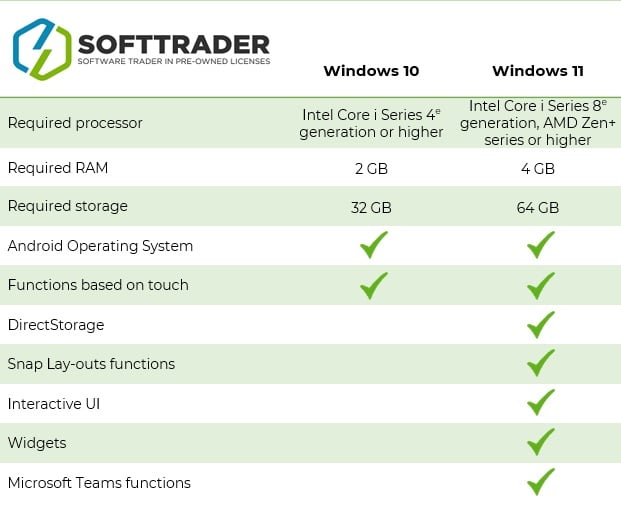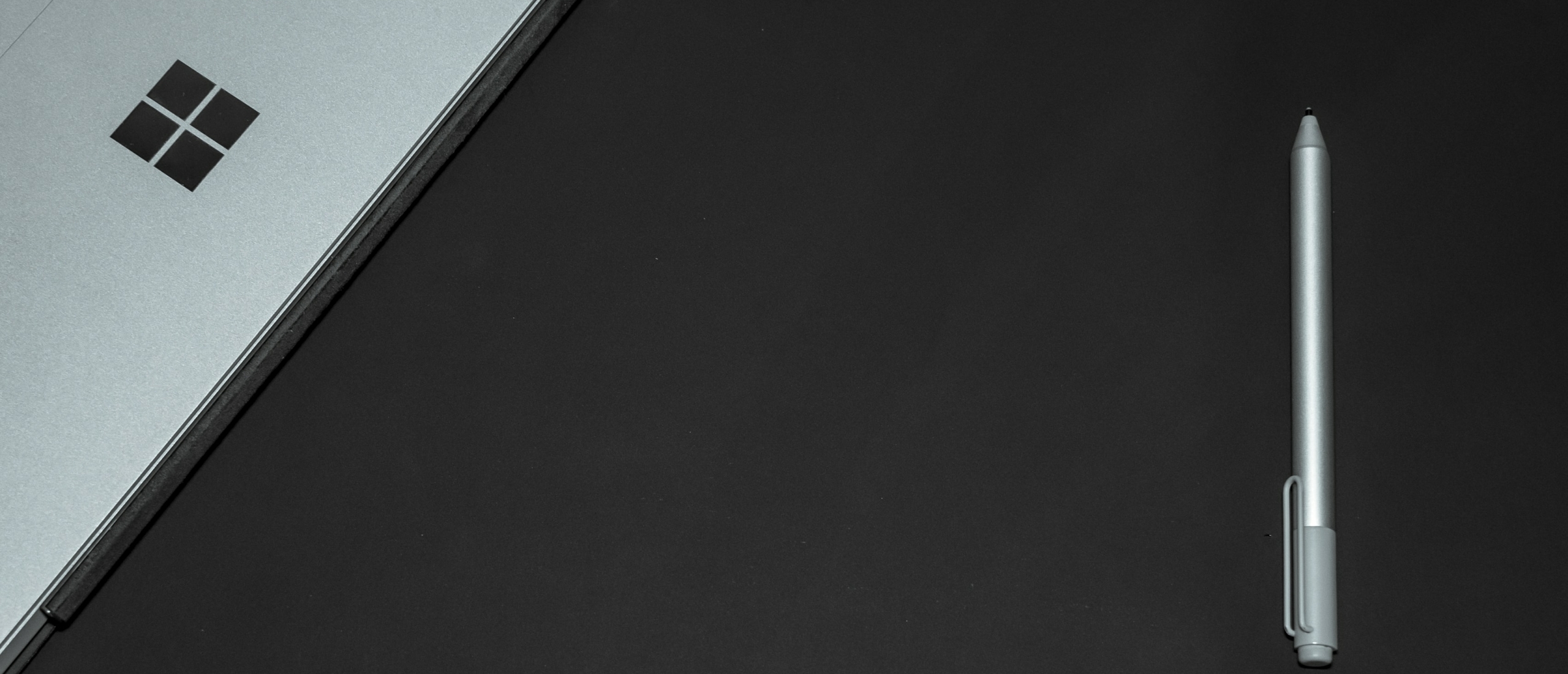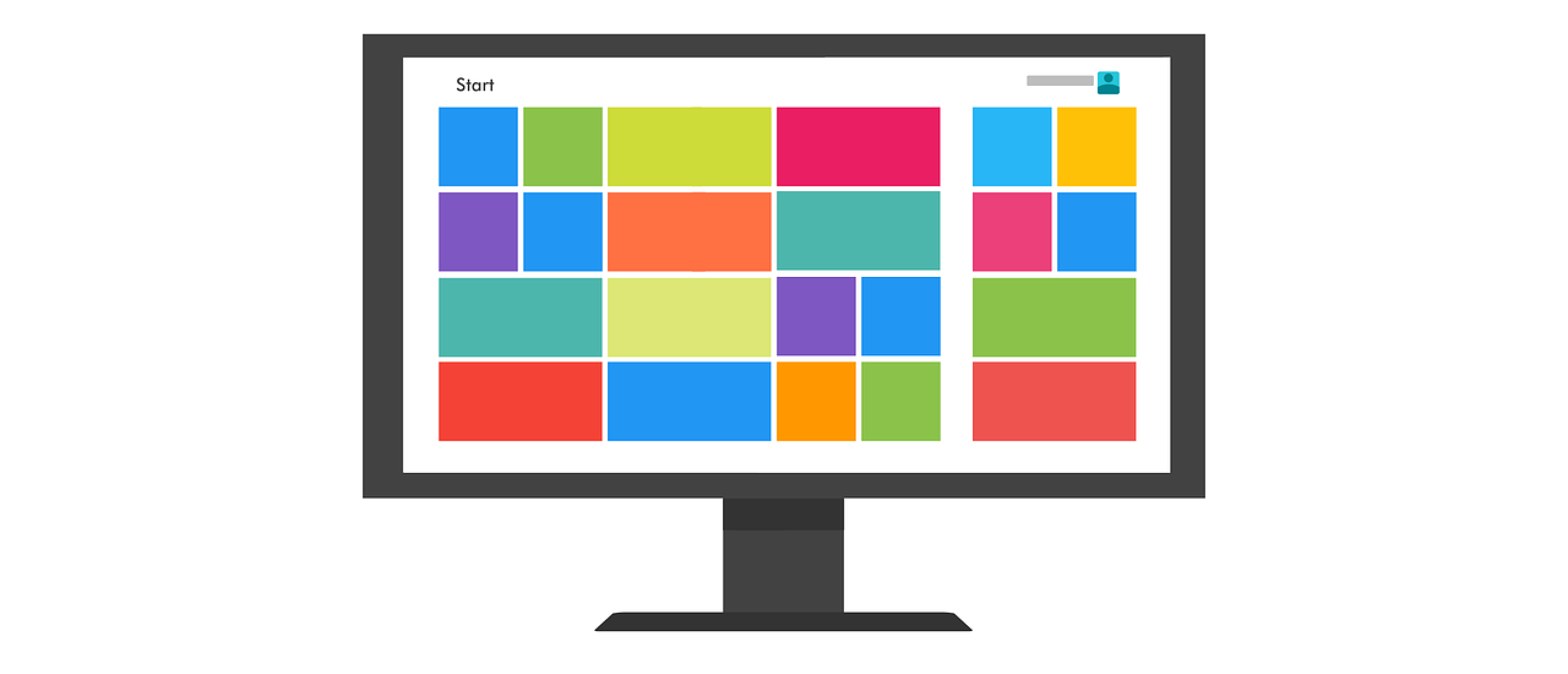
Microsoft Windows is an operating system that supports the basic functions of a computer. The latest version of this is Windows 11. Sometimes it can be difficult to determine which version is best suited. Is the latest version always the best choice? This blog compares the latest version of Windows (Windows 11) and its predecessor (Windows 10).
Windows 10 vs. Windows 11: System Requirements
Windows 10 runs at TPM 1.2 or above. Older versions are not compatible with it. Windows 11, on the other hand, runs on TPM 2.0. All older versions are no longer compatible with it. Windows 10 runs on Intel Core i Series 4th generation processors or higher. Older versions are not compatible with it. Windows 11 runs on Intel Core i Series 8th generation, AMD Zen+ series processors or higher. Older versions are no longer compatible with it.
Windows 10 vs. Windows 11: Performance
By default, Windows 11 has a lot less applications running behind the scenes than Windows 10. Windows 11 has a new resource allocation algorithm, which allows the system to better prioritize applications in the foreground. These improvements allow Windows 11 to easily offer higher fps and lower battery consumption.
Windows 11 also uses DirectStorage. This ensures that data is decompressed directly in the GPU. This results in slower loading times, higher frame rates and lower battery consumption. Windows 10 does not have DirectStorage.
Windows 10 vs. Windows 11: Storage space and RAM usage
Windows 10 only works on devices with at least 2 GB of RAM and 32 GB of storage. Any devices that deliver less than that will not be enough for Windows 10. Windows 11 is of course newer and therefore suitable for newer equipment. Windows 11 works on devices with at least 4 GB of RAM and 64 GB of storage.
Windows 10 vs. Windows 11: Cost
Click below to request a no-obligation quotation.
Windows 10 vs. Windows 11: New Features and Changes
Both versions include multitasking features as in the Android Operating System and touch based functionalities. Windows 11 also has a new snap layouts function, which allows you to display multiple applications in different sizes on the screen.
Windows 11 is more focused on Mac OS and Linux Desktop functionalities where Windows 10 is focused on Android functionalities. With Windows 11, the aesthetics of the desktop and the interface have been adjusted accordingly. Functions have also been added, such as an interactive UI.
The taskbar is also different in Windows 11, making it easier for using touch-based devices. Widgets have also been added, which help to make the desktop according to your needs.
With Windows 11, Microsoft Teams is installed automatically. Microsoft Teams is extremely easy to use. In the taskbar there is the possibility to quickly send messages, sound or video recordings to friends and contacts.
Windows 10 vs. Windows 11: Key Differences
Design
Windows 11 has therefore changed the design in several areas, such as the taskbar and the desktop. Windows 10 is more focused on Android functionalities where Windows 11 is more focused on Mac OS and Linux Desktop functionalities.
Features and Applications
With Windows 11, new features and applications have been added, some have also been removed. Microsoft Teams is installed by default with Windows 11, not with Windows 10. Windows 11 also includes additional functions that connect to this. Microsoft Teams is the replacement for Skype, which is not standard in Windows 11. It can be installed separately.
What is also no longer in Windows 11 is Timeline. Timeline ensures that applications and documents are put in chronological order. However, this was little used and has therefore been removed. Cortana is no longer included as standard.
Device Requirements
Windows 11 only works with TPM 2.0 and Windows 10 from TMP 1.2 and above. Windows 11 only works on devices with Intel Core i Series 8th Generation, AMD Zen+ series processors or higher. Windows 10 runs on devices with Intel Core i Series 4th generation processors or higher.
Support
Windows 10 will be supported until 2025, Windows 11 will be supported longer. The date until Windows 11 is supported will be announced as soon as a new version of Windows is released.

Windows 10 vs. Windows 11: Which is Better?
Which version is most suitable differs per situation. If you want the latest of the latest and want to minimize the chance of problems, then the latest version is of course recommended. If you want to have the software on a specific type of computer, it also depends on the required processor, for example. Both versions work great, but in general Windows 11 will perform just a bit better and be easier to use than Windows 10.
Want to know more about Windows 11 Pro?
Do you have questions? Contact us!
For more information about which Microsoft software and licenses are best for you, please contact us. We are available from Monday to Friday from 9 a.m. to 5 p.m.











